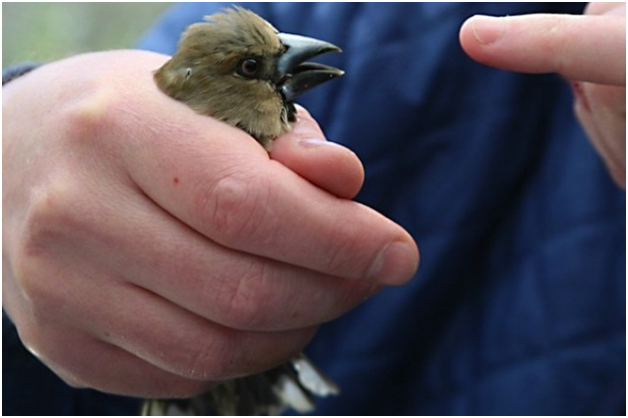Some Species of Birds Have Adapted to the Radiation Released in the Chernobyl Accident
Twenty eight years ago, an explosion and fire at the Chernobyl Nuclear Power Plant in Ukraine released huge amounts of radioactive particles into the atmosphere. The contamination spread over the western U.S.S.R. and Europe. Half a million workers fought the aftermath of the disaster and were involved in the cleanup. A half a billion dollars were ultimately spent. There is an exclusion zone eighteen miles in radius around the ruins of the Chernobyl plant. Recently I talked about a pine forest near the Chernobyl plant that has been dead for decades but has not rotted because the microorganisms responsible for rotting were killed by the radiation from the accident. Today I am going to talk about how some birds in around Chernobyl have survived and adapted to the elevated levels of radiation.
Ionizing radiation causes biological damage by producing free radicals in living cells. Living systems protect themselves against ionizing radiation by producing antioxidants. If there are not enough antioxidants, the free radicals cause genetic damage and oxidative stress which accelerates aging and can cause death. Previous examinations of wildlife in the Chernobyl exclusion zone have shown the chronic radiation exposure depleted antioxidants and increased oxidative damage.
Recently, mist nets at Chernobyl were used to capture birds for testing. In all, one hundred and fifty birds from sixteen different species were caught at eight sites in and near the exclusion zone. Radiation from the capture sites varied from twenty nano Sieverts per hour to nine hundred and twenty nano Sieverts per hour. The researchers took blood and feather samples from the captured birds and then released them.
In the blood samples, the researchers measured an antioxidant called glutathione, oxidative stress and DNA damage. In the feathers, the researchers measured the level of melanin pigments. Eumelanin is a black and brown pigment and pheomelanin is a red and pink pigment. Antioxidants are consumed in the production of pheomelanin so birds with red and/or pink pigments in their feathers are most affected by ionizing radiation. In general, the birds in areas with the most ionizing radiation had good body condition and increased levels of antioxidants along with less oxidative stress and DNA damage. On the other hand, if the birds had red or pink plumage they had poorer body condition and lower levels of glutathione along with more oxidative stress and DNA damage.
Laboratory research had previously shown that prolonged exposure to low levels of ionizing radiation can result in adaptation of humans and other animals to radiation. In addition, such adapted creatures can better withstand the effects of increased doses of radiation. The Chernobyl researchers confirmed that animals in the wild can also adapt to radiation exposure. A famous microbiologist and environmental activist named Rene Dubois once said something to the effect the human race might eventually adapt to environmental pollution if it does not kill us first. Given the increasing danger of another major nuclear disaster in the near future, we may have the opportunity to test Dubois' theory.
Photo credit: The hawfinch (Coccothraustes coccothraustes) is one of several bird species that appears to have adapted to radioactive conditions inside the Chernobyl Exclusion Zone / T.A. Mousseau and A.P. Møller, 2011:
